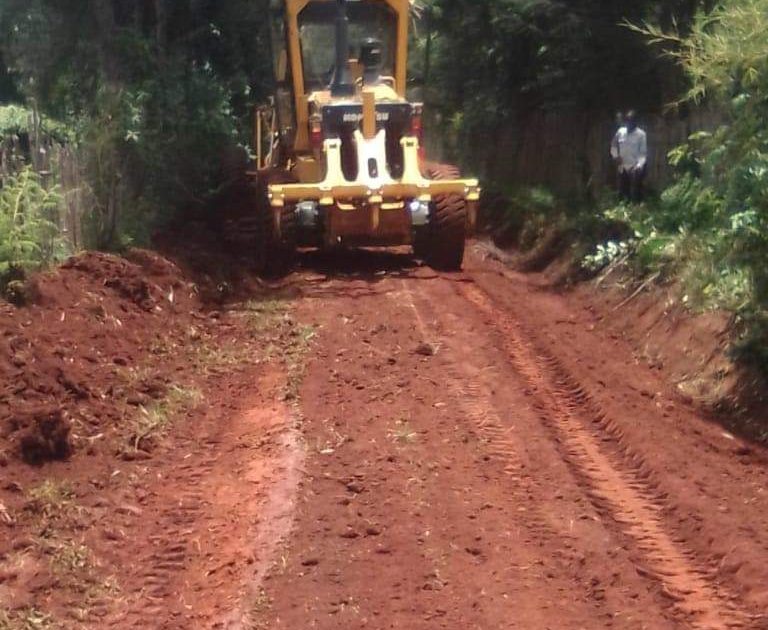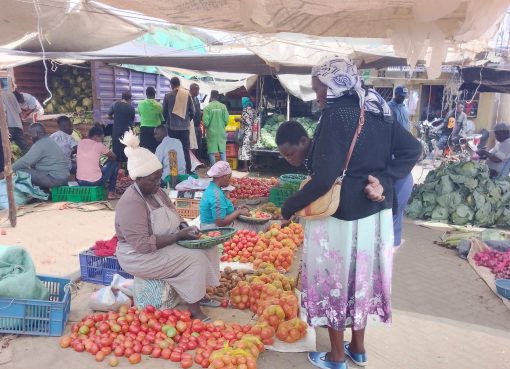The landscape of Nakuru County is fast changing after the national government pumped more than Sh.7 billion in building and upgrading road and railway network in the region.
The strategic investments expected to turn around the County’s fortunes and bolster its revenue base come in the wake of inauguration of the dry port at Naivasha and plans to build industrial parks in Salgaa, Oserian, Kabarak and Njoro.
Area County Commissioner (CC), Erastus Mbui said the projects are a boost to development stimulus through reduced transport costs and travel times, reductions in vehicle operating costs and increased speeds.
Speaking to KNA in his office on Tuesday, Mbui said engineers and surveyors were exploring ways of linking the Standard Gauge Railways (SGR) with the old railway at Longonot in Naivasha at the cost Sh.3.663 billion.
“Those whose land will be hived off in the process of upgrading the old railway will be compensated after due process is followed. We have issued notices to individuals and companies occupying the corporation’s land, offices and premises to vacate,” he said.
The dry port was now experiencing a major follow up of cargo whose movement to Malaba and Kisumu will be facilitated by upgrading the railway line all the way to western Kenya.
“Expertise in linking the old railway network to SGR and its subsequent upgrade will be sourced from National Youth Service and Kenya Defense Forces engineering personnel to cut costs. Locals will be given priority as labourers in the project which has already been handed over to a contractor,” stated the county commissioner.
At the same time, the county government is also gravelling rural access roads under the Boresha Barabara programme, a brainchild of governor Lee Kinyanjui.
The County Commissioner said the 65 kilometre Subukia, Lower Solai-Maili Kumi road being constructed at a cost of Sh2.4 billion was 50 percent complete.
He stated that motorists from Bahati, Subukia, Solai and Nyahururu now use the Section 58 road avoiding the Nairobi-Nakuru highway, which has often delayed passengers heading to Nakuru town due to traffic jams caused by trucks.
“Before the construction of the Kunste interchange, motorists in Bahati would be stuck in traffic from Nakuru town for over two hours, a distance of about six kilometers, but now it takes less than 20minutes,”said Mbui.
The County Commissioner said transportation of farm produce from neighbouring counties of Narok and Kericho to Nakuru had been made easier following completion of the Sh.2.9 billion-126-kilometer-long Mauche, Bombo, Olenguruone, Kiptagich-Silibwet Road.
And while the Sh1.5 billion-23 kilometre Gilgil- Machinery road was complete, works were still ongoing on the Sh.1.076 billion-24-kilometre-long Elementaita-Mau Narok Road. Maintenance works were also ongoing on Naivasha-Narok and Mai Mahiu-Narok roads at a cost of Sh.289.9 million and Sh.288 million respectively.
Other ongoing road construction projects in Nakuru include Molo-Kibunja (Sh.478 million), Salgaa-Rongai (Sh.252.5 million), Subukia-Shrine (Sh.241 million), Mau-Summit – Junction (Sh.199 million), Maili Kumi-Nyahururu(Sh.195.3 million) and Maraigishu-Kinungi (Sh.41 million) and Mang’u-Berer (Sh.40 million).
He said the number of tourists visiting the devolved unit will be boosted following the Sh.398 million upgrade of the Naivasha, Karagita-Kongoni Road that links up Moi South lake region which hosts dozens of camping sites and resorts.
Meanwhile, in addressing perennial long distance truck snarl ups along the Gilgil weighbridge, Sh.186 million had been set aside to expand the 2.5 kilometre stretch.
Mbui said a contractor was on site to rehabilitate Njoro, Elburgon-Turi Road at a cost of Sh.333 million.
The County Trade and Tourism Executive, Raymond Komen said the infrastructure projects will boost the number of tourists coming to Nakuru due to reduced traffic jams.
“The projects are definitely game changers. This is a great achievement by the national government. Tourists and travelers going to Nakuru now spend less time to their destinations compared to earlier when the journey took more hours,” he said.
Property owners are also happy with the revamped road network, saying this will attract investors.
The government has also refurbished at least 15 roads in Nakuru town ahead of the town’s upgrading to a city.
The expansion of the road network has also seen the Central Business District expanded with more traders and investors putting up high-rise buildings along the refurbished roads.
With the recent construction of the interchanges, the improved road network will also boost the movement of traffic in the town, considered the capital of Rift Valley.
And with the new developments, Nakuru is experiencing growth and influx of industrial investments, including the recent entry of Simba Cement factory at Salgaa.
By Anne Mwale




